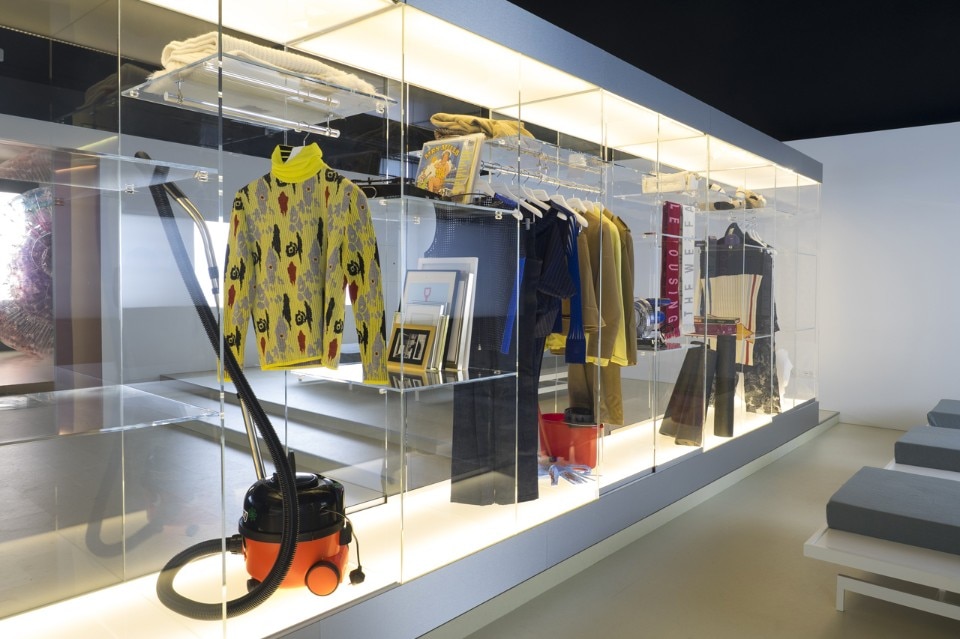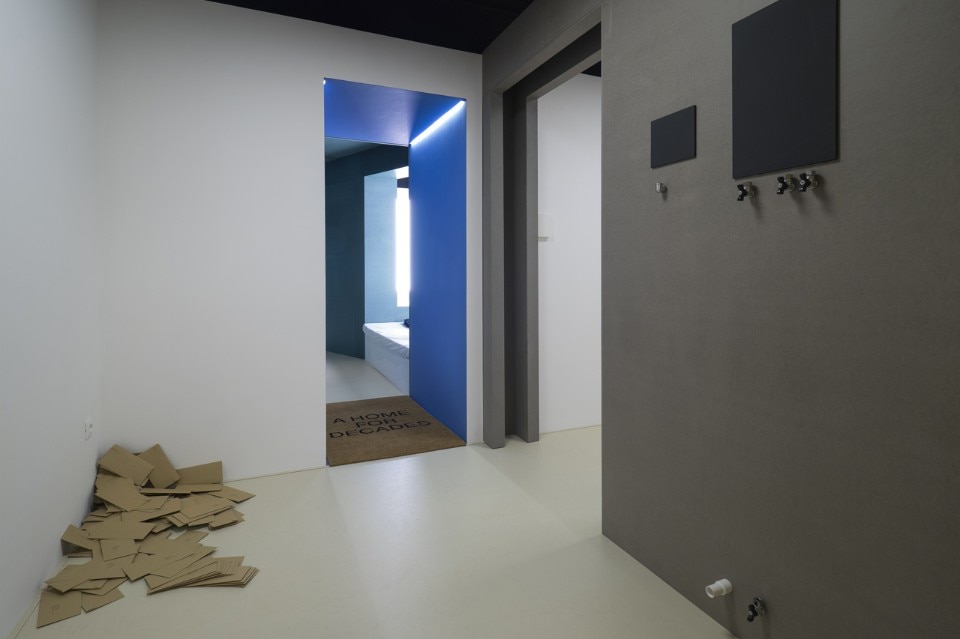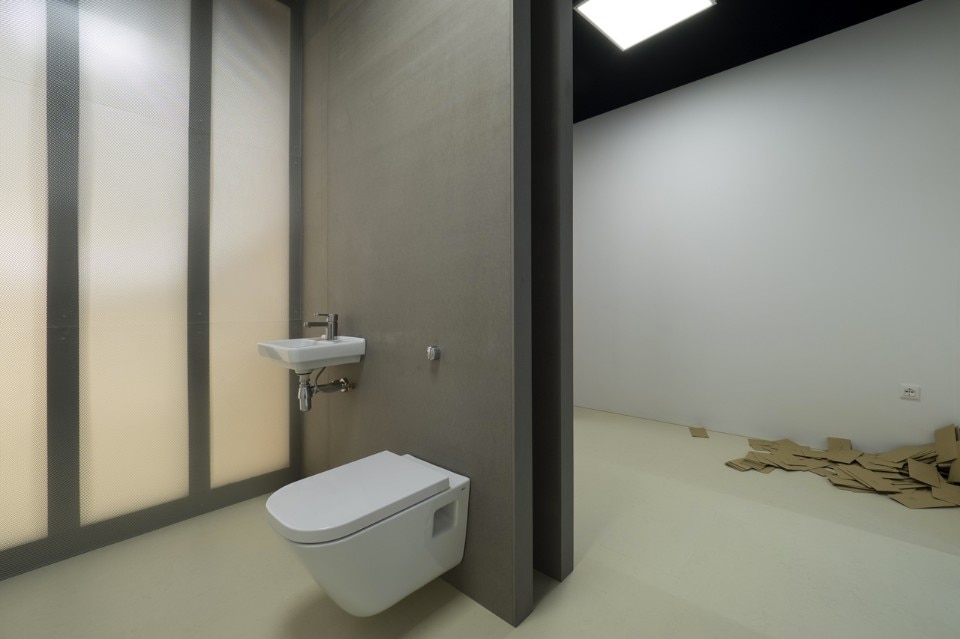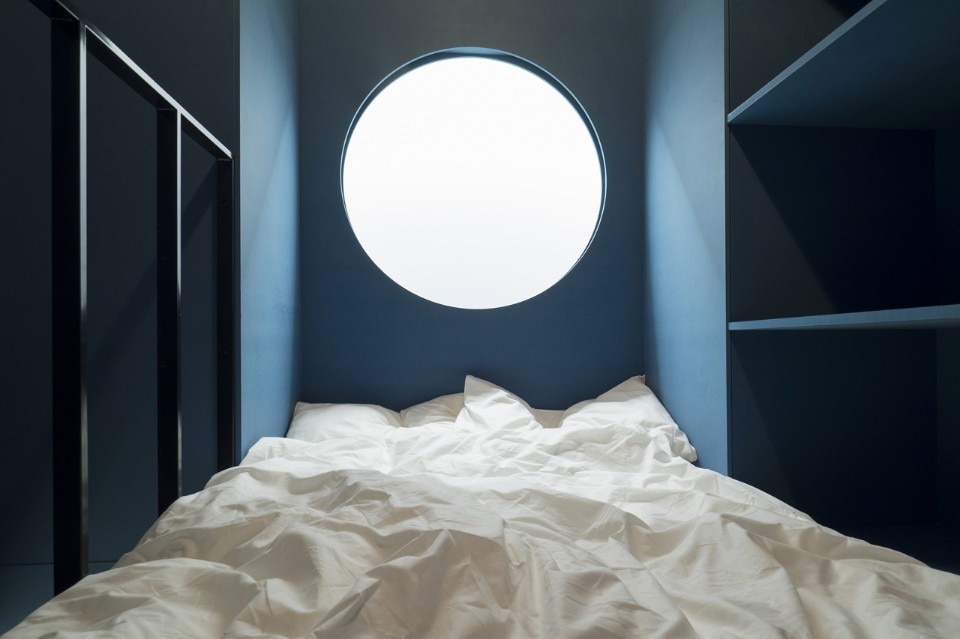


A corridor then leads to a four-roomed house to be purchased and lived in for several years. Curated by Julia King, it is a “Space for living, not speculation” at the expense of the purchaser. Everything is provocatively reduced to the bare minimum with just walls, utilities, WC and a washbasin; even the bed is missing as the person who lives there will choose their own. The living space is reduced to a shell that corresponds to the property’s selling value, without the “extras” that disproportionately drive up prices.
The last model on display, by Hesselbrand, seems almost anachronistic because conceived as a home where a family can live at length, even for decades. Described as “A room without functions”, there are no set uses and the diverse and multiple spatial and formal features are moulded by the light, opening and closing of spaces and a soft or hard surface consistency, while a large square bed dominates the whole.



